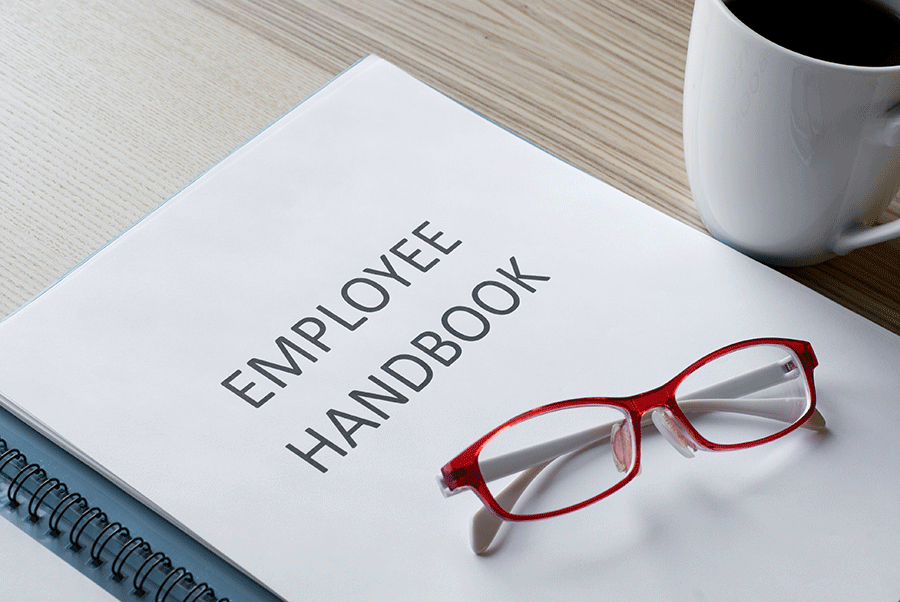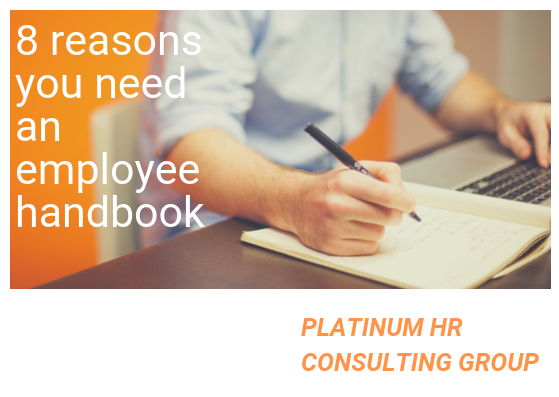Ending an employment relationship is one of the toughest responsibilities for any employer. Whether it’s due to performance, misconduct, or redundancy, every termination carries some level of risk.
Your Q4 HR Checklist for a Strong Start to 2026
A Smart Employer's Guide to Hiring Summer Interns and Seasonal Help
Why Every Company Must Act Now In Preventing Workplace Harassment
California SB 553: 6 Key Requirements for a Compliant Workplace Violence Prevention Plan
The recently passed California Senate Bill (SB) 553, signed into law on September 30, 2023, mandates that employers develop and implement a comprehensive Workplace Violence Prevention Plan (WVPP) as per Labor Code section 6401.9. This law, which took effect on July 1, 2024, holds employers accountable for creating safer work environments.
Navigating HR Compliance: Essential Tips for Small Businesses
HR compliance acts as a rulebook for all businesses when it comes to sourcing candidates, hiring, training, and managing employees long-term.
Although staying compliant with HR laws and regulations can be challenging, small businesses and large enterprises alike can improve their HR efforts and create a safe and engaging space for their employees.
Mitigate Risk with an Employee Handbook
COVID Vaccine and Testing FAQ’s
Recently in the news, President Biden announced the requirement of mandatory vaccinations or testing for private employers with 100 or more employees. Some employers under 100 still want to implement these requirements. Most have expressed they want to do it to keep their employees and customers safe.
There are many questions from employers on what to do. The most popular questions we have received recently include:
“If I require an employee to go get a COVID test, or to be vaccinated, who pays the costs of testing or vaccination?
Do I have to pay the employee for the time it takes?
Do I have to accommodate employees with a disability or religious belief that prevent them from getting the vaccine?
Fortunately, California’s Labor Commissioner has weighed in on who pays for the cost of COVID testing and vaccination, and whether wages and expenses are owed to the employee.
Cost of Testing or Vaccination
If an employer requires an employee to obtain a COVID test or a vaccination, then the employer must pay for any costs incurred by the employee for the test or vaccination. This is because California law requires employers to reimburse employees for all necessary business expenses (Labor Code Section 2802).
If the employer has not designated a specific testing or vaccination site, workers may ask which location(s) or vendor(s) are acceptable to the employer to avoid disputes over cost.
Wages
If the employer requires an employee to obtain a COVID test or vaccination, then the Labor Commissioner requires the employer to pay for the time it takes for the testing or vaccination, including travel time and time spent waiting for the test or vaccination to be performed.
Wages are due because the time spent, including traveling and waiting, is time during which the worker is subject to the control of the employer and is considered “hours worked.” An employee who goes for a test or vaccination outside of their regular working hours could also be entitled to overtime pay if the time spent puts the worker over eight hours in a day or 40 in a week.
An employer may not require an employee to use paid leave time (such as COVID-19 Supplemental Paid Sick Leave or California Paid Sick Leave) for an employer-mandated COVID test or vaccination.
Please note, time spent after COVID testing while waiting for test results does not need to be paid as hours worked. However, the worker may be able to utilize paid leave while waiting for the results.
Travel Expenses
If the testing or vaccination is performed at a location other than the employee’s ordinary worksite, the employee also may be entitled to reimbursement for necessary expenses incurred to travel to and from the testing or vaccination location.
Disability or Religious Accommodations
Although both the US Equal Employment Opportunity Commission and the California Department of Fair Employment and Housing have stated that private employers may implement a mandatory vaccine policy, employers must also be aware of accommodation requests that may arise related to an employee’s disability or sincerely held religious beliefs.
For many employers, disability accommodation is something we are familiar with — an employee requests an accommodation, the employer requests a medical certification and then the employee and employer try to find a reasonable accommodation. This is known as the interactive process. Mandatory vaccination policies don’t change this process.
Conversely, many employers may have little to no experience with religious accommodations. Unlike disability accommodations, employers generally may not ask for documentation to substantiate the need for the religious accommodation. Because the law takes a broad view of religious accommodations, employers are usually required to take the employee’s beliefs at face value.
Once an employer knows the employee has a protected disability or religious belief, both the EEOC and the DFEH instruct employers to engage in a good faith interactive process to determine if there’s a reasonable accommodation for the employee’s inability to receive the vaccine; this must be done before the employer makes any decisions regarding that individual’s employment.
While the EEOC identifies several potential accommodations that may be reasonable — wearing masks, adjusting shift schedules, teleworking and reassignment — whether an accommodation is reasonable and doesn’t constitute undue hardship, such as compromising the health and safety of the workforce, requires a case-by-case analysis. We recommend you seek legal counsel if you get to this point.
Summary
We hope you have found this article helpful and timely with the ever changing environment of COVID vaccines and testing. We know many questions come up for or clients and we are here to help. Many situations that arise with an employee are unique. If you need more custom guidance please feel free to reach out directly to us here at Platinum HR Consulting Group.
www.platinumhrcg.com 657-888-3648 lisa@platinumhrcg.com
American Rescue Plan Act
Employer's Guide to A Remote Worksite
Pat yourself on the back, you have been running a small business, during a pandemic for almost a year now. Remaining aware and compliant with the vast amount of changes in workplace laws and regulations due to employees being remote has been challenging and confusing at times. Never before have we seen such a shift from on-site work to remote work, these tremendous changes bring various challenges for employers to remain compliant and safe from litigation. We have rounded up the top issues employers are faced with when running a remote workplace.
Harassment and Discrimination
Working remotely does not prevent employees from being harassed or discriminated against during their workday. Employers still have an obligation to protect their employees against harassment and discrimination while they carry out their job duties for their employer from their new workplace; home. Employees can be subject to harassment and discrimination while working remotely on virtual meetings or through text or messaging applications. The nature of these means of communication can promote casual behavior where employees may find it tempting to drop their professionalism. Employers should communicate clearly what behavior is prohibited and encourage employees to report any inappropriate behavior to HR for investigation.
Employers should also remember California requires all staff receive Sexual Harassment training every other year. New employees need trained within 6 months and temporary employees need trained within 30 days. Platinum HR offers this training online at a low cost.
Wage & Hour Issues
Working remotely as an hourly employee can be very challenging at times, but even more challenging for the payroll department. First, ensure your employees are properly classified as exempt or non-exempt depending on the job duties they engage in being remote. Ensure all employees that are non-exempt are following the labor laws set forth by their state or local region. Some employers allow their employees to work from anywhere – any state. Ensure they update their address in your payroll system to allow for proper taxation and wage and hour compliance. Correctly recording when employees are on the clock versus off the clock will be a challenge. Ensure employees are properly trained on the policies and processes put in place to correctly record these times and follow up to see these are being followed. Ensure you have solid policies for working off the clock and timekeeping.
Give us a call if your timekeeping policies need to be updated to remain compliant with remote work.
Home Office Expenses
Yes, you need to pay for your employee’s internet, not all of it though. Employers are expected to cover the necessary costs associated with carrying out the employee’s job duties. Could the employee do their job without the internet? If the answer is no, then the employer needs to cover a reasonable portion of the employee’s home office costs. A taxable home office stipend per month to cover the internet, power, desk supplies, etc is an easy way to remain compliant in this area. Be sure to have a solid policy that backs this up and outlines how it is administered and to be used.
Workplace Safety
Employers are still liable for their employees getting injured while working, even at home during a remote workday. Communicating to your employees what a proper workspace looks like, with proper ergonomics is a good start. If employees are modeling improper ergonomics on video conference meetings, let them know how they can fix this and better yet – send them the proper set up they might need. Be familiar with what is considered a workplace injury and the necessary steps to take to handle these claims if they arise.
Build a Little Culture
Working remotely can cause teams to start working in silos or feel isolated and disconnected from one another. Without the organic hallway conversations and collaborative lunches we once enjoyed while working onsite, employees working remotely can feel isolated quickly. Providing employees with breaks to chat with each other or collaborate with one another can help break down these remote workplace barriers and give employees an opportunity to collaborate with one another outside of their functional teams. Building in thirty minutes for your team to attend luncheons, trivia games, happy hours or scavenger hunts can help break up the day and give employees a chance to relax with one another.
It is a good time to update your employee handbook to reflect the cultural and legal changes that have changed the workplace over the last year.
Human Resource Compliance in 2021
New 2021 Employment Laws in California
The True Cost of a Bad Hire
Hiring the wrong person for the job can be expensive. Here are a few areas where if executed correctly, can save your company time, money and help you find the right candidate for the job. Need help filling a role? HR Consultants can assist in part or the entirety of the recruitment process by streamlining your efforts and aiding in vetting and selecting the right candidate.
Maximize Your Profits with an HR Consultant
What Does Getting Back To Work Look Like?
Thankfully this pandemic cannot last forever. The State of California has been under stay at home orders for nearly two months, allowing only Essential Businesses to remain open to the public. While this has caused many businesses to either terminate or furlough their employees, soon we shall see many businesses reopening and hiring back their employee base. We are here to outline some important points to rehiring or reinstating your employees and keep them protected from COVID-19.
Legalities of Rehiring Employees after COVID-19 Layoffs or Furloughs
Layoff vs. Furlough – It is important to differentiate weather you have laid off or furloughed your employees. A layoff entails providing a final paycheck including all hours worked, all accrued and unused vacation time (not paid sick leave), as well as providing continuing health coverage through COBRA, if employees utilized it prior. A furlough means the employees hours were reduced to zero for a short time while health insurance premiums and other benefits are maintained, and employees are technically still employed. If you are bringing employees back that were furloughed, all that is needed is providing guidelines of what working looks like now. If you are bringing back laid off employees, prepare to complete most new hire forms and procedures.
New Hire Paperwork - When rehiring an employee within 3 years of them completing their original I-9 Form, a new I-9 Form is not needed. Keep in mind as of May 1st, 2020 there is a new I-9 Form for all new hires to complete. Read more about it here. Employees with an original I-9 Form older then 3 years, will need to complete a new one. Since May 1st is around the corner, you will most likely need to complete the new I-9 Form for all rehired employees. There are state and federal forms and pamphlets that are required by law to be given to new hires upon commencement of employment. Rehiring employees is no difference. These forms include, Form W-4 (More information on the new 1/1/20 W-4 Form here), DE4 California’s Employee Withholding Certificate, Worker’s Compensation, Disability Insurance, Paid Family Leave and Sexual Harassment pamphlets to start. Need access to these forms? Give us a call and we will walk you through them. In addition to state and federally mandated forms and pamphlets, employers should redistribute their 2020 Employee Handbooks including a conformation of receipt kept in the employee’s file. Friendly reminder, as of 1/1/20, there were several laws passed that now should prompt a revision to your Employee Handbook. If you would like your Handbook updated or you need a new one, schedule a call.
Paid Sick Leave - The paid sick leave that was not paid out at termination is like a bank account that expires after one year of termination of the employee. If you rehire an employee within one year of their termination date, the paid sick leave bank account is reinstated with the balance it had as of their last day of employment, and continues to accrue on day one of employment based on your company policy. If you need to make sure your policy is compliant with State guidelines, reach out to us and we can discuss what it should entail to meet minimum guidelines.
Changes in the Workplace
It is still the employer’s responsibility under OSHA requirements to protect employee’s health in the workplace. In the past this usually included workplace safety training to keep workplace accidents and injuries to a minimum and keep employees employed and return to work safely after an accident. This now includes protecting employee’s health against COVID-19 exposure. A few changes in the workplace have emerged to help employers protect their employees against the spread of COVID-19. As of March 18, 2020, the Equal Employment Opportunity Commission (EEOC) gave employers the right to take employees’ temperatures at work, in order to avoid the spread of COVID-19 in the workplace. Anyone familiar with HIPPA or ADA requirements knows this means business. In addition, many employers are making it mandatory for their workforce to wear masks/gloves while at work or while conducting business on company time. Many employers have added this to their Uniform Policy, and provide this protective equipment to their employees. Some employers are opening their offices to all employees with reduced work schedules for all, maintaining no more then 50% of their workers within the building at any time. Some employees report to work Monday, Wednesday while others report on Tuesdays and Thursdays. This keeps the total number of employees contained in one space to 50% of what it was, while promoting the practice of social distancing giving everyone the availability of having 6 feet of space from one another. If operating an office or shared work space, be sure to have a consistent cleaning schedule and available area for employees to use a hand washing station or provide hand sanitizer.
Keep in mind these guidelines are emerging for Essential Businesses. We can all take a page from what they are doing in their work spaces, to keep ours safe once we are able to start operating. Would you like a return to work policy created for your workforce? Give us a call and we can tailor one to meet the needs of your business. We are here to help all businesses return to “normal” operations in a phased approach while maintaining legal compliance.


















